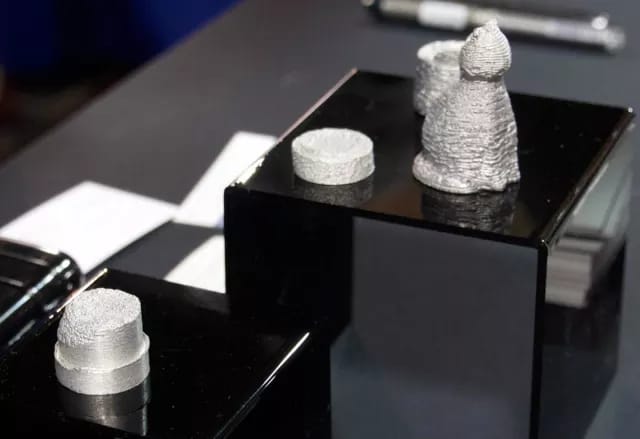
With its emphasis on presentations and discussions over shiny objects on the showroom floor, AMUG provides a unique experience for its additive manufacturing (AM)-experienced attendees.
Although the event’s presentation on new metal 3D printing technologies could have easily become lost amidst the marketing fluff at any other conference, at AMUG, the talk was focused on the practical aspects of metal AM.
During this talk, three important start-ups chatted with attendees about their technologies: Markforged, Voxel8 and Vader Systems. They were not the only metal AM companies at the event with exciting new processes, however. XJet and Admatec were also present at AMUG, showcasing their takes on metal AM.
The sheer novelty of these processes is interesting, but how do they contribute to metal AM as a whole? Well, each technology addresses existing problems with metal 3D printing in a way that may make them attractive to potential users.
Markforged
At CES this year, Markforged unveiled its new Metal X 3D printer, which takes the company’s carbon fiber 3D printing technology to the next level. Rather than laying down continuous strands of fiber reinforcement within plastic parts, the Metal X actually prints with metal encased in a thermoplastic matrix in a process referred to by Markforged as atomic diffusion additive manufacturing (ADAM).
The parts are printed in a method similar to standard fused deposition modeling, but, once complete, they are thrown into a traditional sintering furnace, which burns out the thermoplastic and fuses the metal together, creating a 95 to 99 percent dense metal part.
For less than $100,000, the Metal X is much more affordable than powder bed or directed energy deposition technologies. Throw in the fact that the bound-powder rods are completely safe to handle, and the ADAM process seems appealing from a safety standpoint because machine technicians will not have to wear ventilators or hazmat suits to handle the material. The process does not use a powder bed, so it’s possible to create sealed complex geometries without worrying how some encased powder would be removed.
A 3D-printed brake lever demonstrating that a lattice infill can be printed using ADAM without worrying about powder escape cavities. (Image courtesy of the author.)
At the moment, ADAM works with 17-4 and 303 stainless steel, but other metals like A-2, D-2 and M-2 tooling steel for injection molding, as well as 6061 and 7075 Aluminum and 6AL 4V Titanium are in development.
Vader Systems
Founded by a father-and-son team, Scott and Zachary Vader, Vader Systems has developed a process dubbed MagnetoJet, which jets liquefied metal from a 1200 °C (2192 °F) chamber encased in an electromagnetic field through inkjet nozzles. This makes it possible to 3D print objects at an impeccable speed of 1,000 droplets per second or 1 lb per hour based on a 500-micron droplet size.
The system also uses standard aluminum wire as its feedstock, dropping down the cost of materials significantly from powder bed systems. Although the materials may save a user some costs in the long run, the printers themselves aren’t cheap. At $400,000 per printer, this puts the technology in line with powder bed systems.
The start-up has so far sold its first machine, the MK1, to the Rochester Institute of Technology. While the MK1 is targeted at research institutions and development labs, Vader is working on a production machine, the MK2, on which Vader aims to have 10 printheads for 30 times the speed. This system will also be able to process more materials, including bronze and copper.
The parts displayed by Vader at AMUG were not the most refined, but post-processing will eliminate surface finish issues, and the company is working to develop software solutions for maintaining speed while increasing resolution.
Read more at ENGINEERING.com

